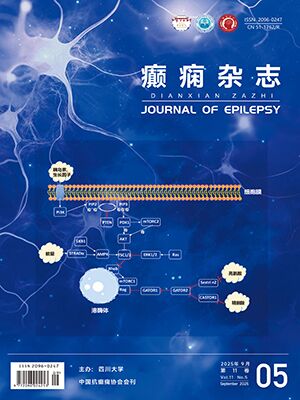| 1. |
王宪荣, 冯华.实用神经外科基础与临床.北京:人民军医出版社, 2003:512-515.
|
| 2. |
周良辅, 主编. 神经外科学. 上海: 复旦大学出版社, 2001: 799.
|
| 3. |
王忠诚, 主编. 神经外科学. 武汉: 湖北科学技术出版社, 2004: 871-872.
|
| 4. |
杨芝荣.脑梗死继发癫痫.临床神经病学杂志, 1996, 9(5):300-301.
|
| 5. |
秦邵森, 国红, 苏闻.中风后癫痫的临床研究.中国神经免疫学和神经病学杂志, 1996, 3(1):46-48.
|
| 6. |
杨明华.50例中风后即发癫痫的临床分析.脑与神经疾病杂志, 2002, 10(1):56.
|
| 7. |
李玉方, 侯红军, 孟森.脑血管病继发癫痫的临床分析.中国实用神经疾病杂志, 2007, 10(4): 95-96.
|
| 8. |
中华医学会神经外科分会.各类脑血管病的诊断要点.中华神经科杂志, 1996, 29(6):379-380.
|
| 9. |
王学峰, 肖波, 孙红斌.难治性癫痫.上海:上海科学技术出版社, 2002:144.
|
| 10. |
李邦松, 王庆梅.70例脑卒中后癫痫的临床特点分析.安徽医药, 2013, 17(09):1533-1535.
|
| 11. |
Faught E, Peters D, Bartolucci A, et a1.Seizures after primary intracerebral hemorrhage.Neurology, 1989, 39(4):1089.
|
| 12. |
张晖, 刘国荣, 庞江霞, 中脑卒中后癫痫发作的临床特点和视频脑电图分析.中华老年心脑血管病杂志, 2012, 14(10):1074-1076.
|
| 13. |
张光伟, 杨军.脑出血颅内血肿微创清除术后继发癫痫46例临床分析.山东医药, 2009, 49(28):11.
|
| 14. |
PM FoyG P, Copeland MD, Shaw M.The Incidence of postoperative seizures.Acta Neurochir, 1981, 55(7):253-264.
|




